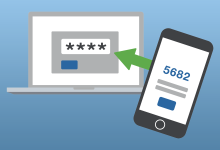
Large Organizations are increasingly embracing artificial intelligence (AI) tools like ChatGPT to streamline operations, improve customer experiences, and enhance overall productivity since the recent innovations in the AI ecosystem. However, with great power comes great responsibility. It is crucial to ensure the secure and responsible usage of AI tools like ChatGPT to safeguard sensitive information and minimize potential risks. This article will provide practical and actionable tips for using ChatGPT safely within your organization.
What is an AI tool?
An AI tool is a software application that utilizes artificial intelligence algorithms to perform specific tasks and solve problems. These tools find applications across various industries, including healthcare, finance, marketing, and education. They help automate tasks, analyze data, and improve decision-making.
Here’s how AI tools work:
- They employ machine learning algorithms to analyze data and make decisions based on patterns and trends in the data.
- By leveraging AI tools, organizations can achieve increased efficiency and accuracy in their processes.
For instance, AI tools can assist in:
- Automating repetitive tasks in administrative work.
- Predicting customer behaviour for targeted marketing campaigns.
- Diagnosing medical conditions based on patient data.
About ChatGPT
ChatGPT, developed by OpenAI, is an AI language model that belongs to the GPT (Generative Pre-trained Transformer) family. Its primary purpose is to engage in natural language conversations with users, provide answers, generate creative content, and assist with various tasks.
- Language Understanding:
- ChatGPT has been trained on diverse internet text, enabling it to understand and generate text in multiple languages. Whether you prefer conversing in English, 中文, 日本語, Español, Français, Deutsch, or other languages, ChatGPT can fluently converse with you.
- Its language comprehension extends beyond mere translation; it grasps context, nuances, and idiomatic expressions.
- Capabilities:
- Natural Language Understanding: ChatGPT can comprehend context, answer queries, and provide relevant information. Whether you’re seeking facts, explanations, or recommendations, it aims to assist.
- Creativity: Beyond factual responses, ChatGPT can unleash its creative side. It generates imaginative content, including poems, stories, and even code snippets.
- Assistance: If you need help with writing, rewriting, or improving your content, ChatGPT can offer suggestions and enhancements.
- Objective Responses: While it doesn’t form subjective opinions, it relies on factual information and strives for accuracy.
- Image Descriptions: When users upload images, ChatGPT can describe them using its internal tools. It provides textual interpretations of visual content.
- Limitations:
- ChatGPT’s knowledge is based on pre-existing data up to a certain point (approximately 2021). It doesn’t have real-time information.
- It doesn’t retain the memory of past conversations, ensuring privacy and security.
- External tools beyond their predefined internal functions remain inaccessible.
What are some real-world applications of ChatGPT?
ChatGPT has a wide range of real-world applications across various domains. Let’s explore some of them:
- Content Creation:
- ChatGPT can generate high-quality content for websites, blogs, and social media platforms. It swiftly produces product descriptions, blog posts, social media updates, and even entire articles.
- Additionally, it assists with creative writing, helping users brainstorm unique ideas, plotlines, and complete stories.
- Translation Services:
- ChatGPT can be used for language translation. It automatically translates text from one language to another, aiding communication across linguistic barriers.
- Conversational AI:
- Create intelligent chatbots using ChatGPT. These chatbots engage in natural language conversations with users.
- Applications include customer service, sales, and support, providing human-like responses.
- Knowledge Discovery:
- By feeding relevant information from databases to ChatGPT, businesses enable it to inform employees using private data. This assists in discovering business insights through natural language interactions.
- Coding Applications:
- Writing Code: ChatGPT can generate code for simple or repetitive tasks, such as file I/O operations, data manipulation, and database queries.
- Debugging: It proposes possible causes of errors and solutions to resolve them, assisting programmers.
- Code Completion: ChatGPT anticipates subsequent lines or segments of code based on context, saving time for developers.
- Content Personalization:
- ChatGPT can tailor content to individual users, enhancing user experience on websites, apps, or platforms.
- Generating Summaries:
- It can create concise summaries of lengthy articles, research papers, or documents.
- Sentiment Analysis:
- ChatGPT analyzes text to determine sentiment (positive, negative, or neutral). Useful for social media monitoring, brand reputation management, and customer feedback analysis.
- Writing Emails:
- It assists in drafting professional emails and suggesting appropriate language and tone.
- Virtual Writing Assistant:
- ChatGPT aids writers by suggesting improvements, correcting grammar, and enhancing clarity.
Tips for using ChatGPT and other AI securely within your organization
1. Data Management
Data management plays a crucial role in ensuring the security and confidentiality of information when working with AI tools like ChatGPT. It is essential to handle data with absolute confidentiality and responsibility. If your work requires sharing private data, it is recommended to disable ChatGPT’s ability to use it for training purposes. This can be done through the settings of the AI model. Additionally, it is important to be cautious about sharing extremely sensitive information, such as credit card numbers or passwords, to prevent any potential breaches.
2. Custom Assistance
ChatGPT can be a powerful assistant, helping you perform tasks more efficiently. To get the most out of this AI tool, provide it with precise and detailed requests to achieve more accurate results. Don’t settle for the initial response; iterate, refine your requests, and ask follow-up questions to ensure the desired outcome.
3. Verification
While ChatGPT can provide astonishing results, it is crucial to remember that it is not infallible. There may be instances where the AI model gets confused or provides information that contradicts reality. It is essential to review and verify the information generated by ChatGPT. Seek insights from your team and subject matter experts to validate the accuracy and reliability of the AI-generated content. Pay particular attention to potential biases that may seep into the responses and ensure that the information aligns with your objectives.
Promoted contents:
4. Editing
ChatGPT can serve as a valuable starting point for generating content or improving existing information. However, it is important to remember that the final work is yours, and you have the ownership to modify and edit it as needed. Don’t shy away from making necessary edits and enhancements to ensure the content aligns with your organization’s standards and objectives.
5. Recordkeeping
Establishing clear processes for experimentation and documenting your achievements is essential when working with ChatGPT. Keep a record of effective prompts and successful outcomes for future reference. This documentation can serve as a valuable resource for your team and help maintain consistency and improve efficiency in utilizing ChatGPT.
6. Networks
Creating a network of professionals and experts who work with AI tools can be immensely beneficial. Exchange knowledge, insights, and experiences not only within your team but also with the wider community. By collaborating and sharing ideas, you can gain a deeper understanding of AI technologies and learn from others’ experiences.
7. Continuous Learning
The field of AI is constantly evolving, and it is important to stay updated with the latest developments, best practices, and security strategies. Participate in conferences, seminars, and webinars, read articles, and engage in continuous learning to enhance your knowledge and skills in working with AI tools like ChatGPT. This proactive approach will help you stay ahead of emerging threats and ensure the safe and effective utilization of AI within your organization.
8. Plan B
No technology is infallible, and AI can experience failures or unexpected issues. It is essential to have contingency plans in place to address any potential disruptions. Ensure that your team includes individuals with critical thinking skills who can step in and mitigate the impact of any AI-related issues. Having alternative approaches and backup plans will help maintain business continuity while safeguarding information security.
Historical Resistances and the Importance of Balance
The adoption of new technologies has often faced resistance throughout history. From the printing press to the emergence of mass media, societal and cultural debates have surrounded these transformative innovations. The advent of AI, including tools like ChatGPT, is no exception. However, finding a balanced approach between embracing technological advancements and critically analyzing their implications is crucial.
We believe in striking the right balance between embracing AI’s potential and addressing any underlying concerns. By adhering to ethical principles and implementing secure processes, organizations can make the most of AI technologies while minimizing potential risks. It is essential to approach AI usage responsibly, with a focus on creating a better society that benefits from the advancements in technology.
Conclusion
Incorporating AI tools like ChatGPT into your organization can significantly enhance productivity and efficiency. However, it is crucial to prioritize data management, verify generated content, maintain ownership through editing, and continuously learn about AI developments. By following these tips and striking a balance between embracing AI and addressing concerns, organizations can leverage AI safely and responsibly to achieve their goals in an ever-evolving digital landscape.
Remember, secure usage of AI is an ongoing process that requires constant vigilance and adaptation to emerging threats and best practices. By implementing these tips and fostering a culture of responsible AI usage, organizations can harness the full potential of AI tools like ChatGPT while safeguarding data privacy and minimizing risks. Embrace the power of AI, but always prioritize security and ethical considerations in its usage.








